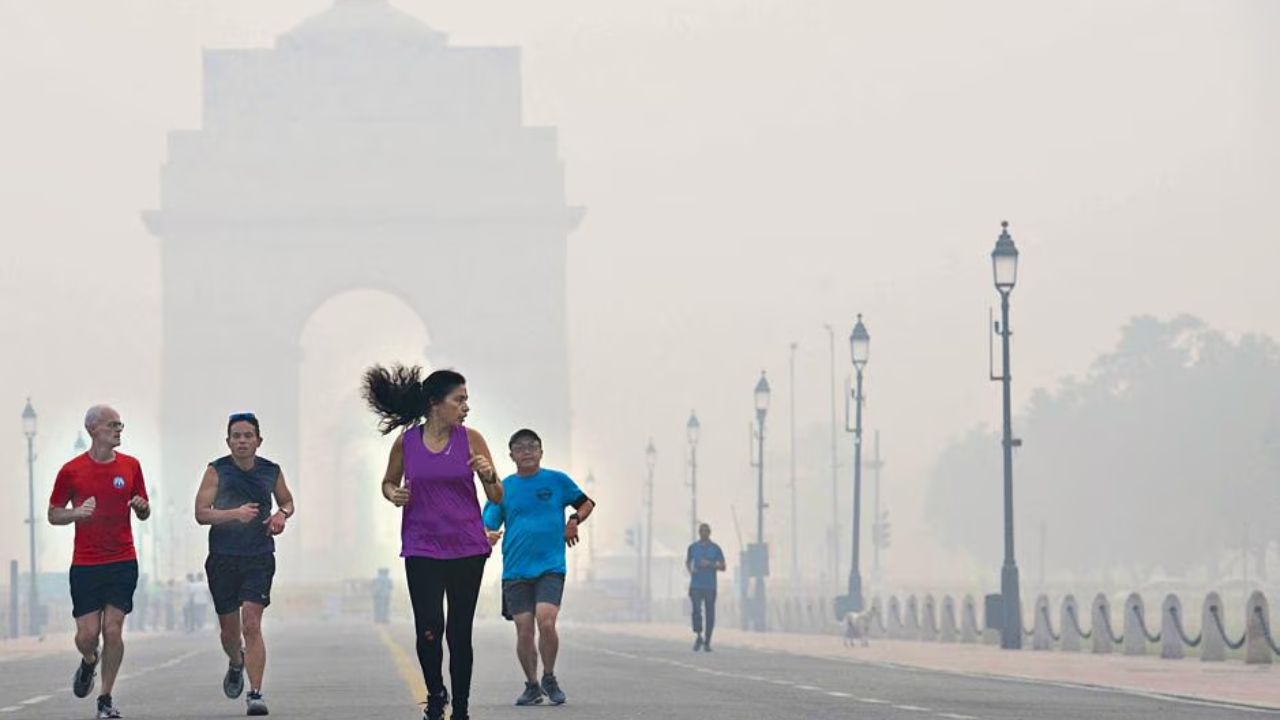 English
English

Think your morning run is boosting your health? It might be doing the opposite. Discover how smog and hidden pollutants could be silently harming your lungs, heart, and performance and what you can do to stay safe while staying fit.

Air pollution can affect your entire system
New Delhi: For many fitness enthusiasts, running outdoors is an invigorating way to stay active and connect with nature. However, as air quality deteriorates in urban areas, that refreshing morning jog could be doing more harm than good.
Exposure to smog and airborne pollutants especially fine particulate matter (PM2.5), nitrogen dioxide (NO₂), and ozone (O₃) has been linked to a range of health problems that often go unnoticed until they become serious.
When you run, your breathing rate increases up to tenfold, meaning you inhale a much larger volume of air and consequently, more pollutants. These tiny particles can penetrate deep into the lungs and even enter the bloodstream, silently damaging cells and organs over time.
Weather Update: Mild chill, hick haze covers Delhi NCR, air quality deteriorates
Air pollution doesn’t just irritate your lungs; it can affect your entire system. Short-term exposure to smog can trigger coughing, throat irritation, and shortness of breath, especially for people with asthma or other respiratory conditions.
But the real concern lies in long-term exposure. Studies have linked regular exercise in polluted environments to reduced lung capacity, increased risk of cardiovascular disease, and even cognitive decline.
Some runners believe that being fit protects them from the ill effects of pollution a dangerous misconception. Physical fitness strengthens the heart and lungs but does not make them immune to toxic air.
In fact, because runners breathe more deeply and more frequently, they may absorb higher concentrations of pollutants than non-exercisers in the same environment.
Athletes training in high-smog areas have reported fatigue, reduced endurance, and slower recovery times, all linked to the oxidative damage caused by pollutants. Over time, this exposure can even affect the immune system, making the body more susceptible to infections.
Walking Vs Running For Fat Loss: The Surprising Winner Explained
You don’t need to give up running altogether, but being strategic can help. Check daily Air Quality Index (AQI) updates before heading out, and avoid outdoor workouts during rush hours or heavy traffic periods. Parks with more greenery tend to have cleaner air, so choose routes with trees and open spaces.
On high-pollution days, switch to indoor workouts such as treadmill running, yoga, or strength training. Using air purifiers at home and maintaining good ventilation also helps reduce overall exposure.
Running keeps you fit, but the quality of the air you breathe matters just as much as your mileage. As pollution levels rise, awareness and precaution become essential. By making informed choices about when and where to run, you can protect your health without giving up your passion for fitness.